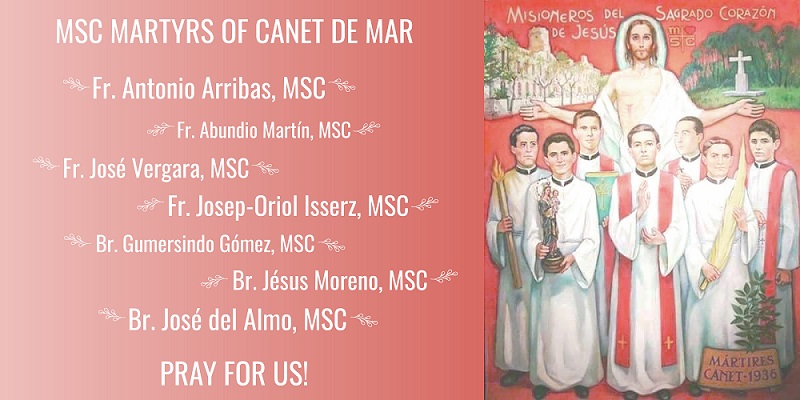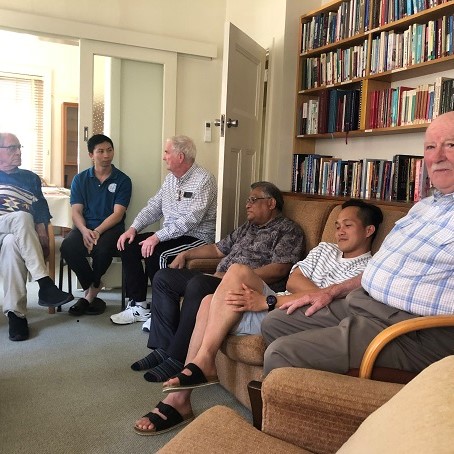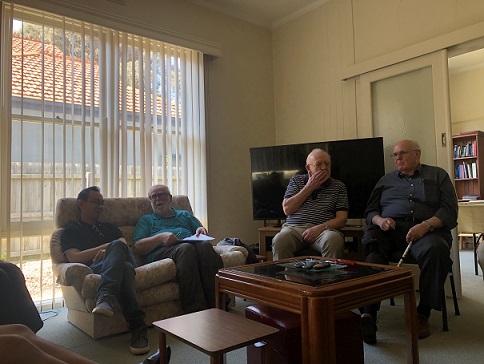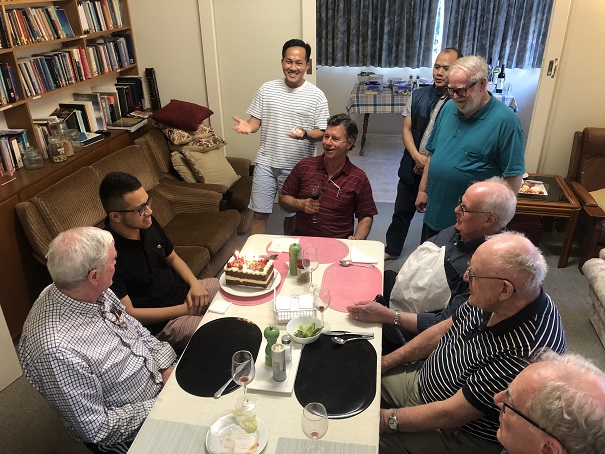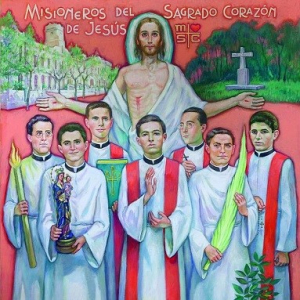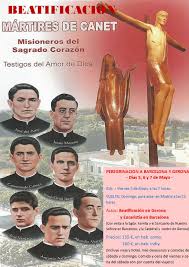Peter MALONE
Synodal style for community meetings! Melbourne Community
Synodal style for community meetings! Melbourne Community
In two years we have had very few community meetings in Melbourne so, gathering in Blackburn last week was a joy.
We had an agenda: safeguarding issues, aged care questions.
We met more informally, young, middle and old, different cultural backgrounds, variety of ministries, students.. And Bob Irwin who has been in Victoria, Monivae, for half the year.
Easy voicing of opinions, suggestions, good listening and discerning, plans emerging.
And, the important aspect of synodality, shared eating and drinking.
Respect
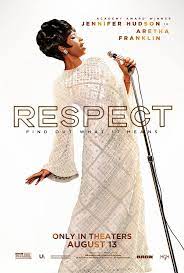
RESPECT
US, 2021, 145 minutes, Colour.
Jennifer Hudson, Forest Whitaker, Marlon Wayans, Tituss Burgess, Audra McDonald, Marc Maron, Kimberly Scott, Albert Jones, Tate Donovan, Mary J.Blige.
Directed by Liesl Tommy.
Two years ago, the documentary, Amazing Grace, which serves as the finale for this portrait of Aretha Franklin, was released after disappearing from distribution for several decades. And, in more recent times, there has been television series, Genius, starring Cynthia Erivovo as Aretha Franklin.
This film, which takes its title from one of her most well-known songs, the spelling out of respect as RE – SP – ECT, is really a portrait of the singer, the equivalent of a concert of many of her songs and performances, and some basic biography. (And it is interesting to note that this year, Singer, Billie Holliday, had her own screen treatment, The US Versus Billie Holliday, covering the period in song and social concerns/racism in the decades preceding Aretha Franklin.)
While this is something of a warts and all portrait at moments, we keep remembering that Aretha Franklin had an extraordinary number of public honours, from US presidents, to posthumous Pulitzer Prize, to singing at the inauguration of Barack Obama. So, the film asks, who was Aretha Franklin and where did she come from?
10-year-old Aretha is first seen being woken up, brought out by her father to sing for visitors, then guided back to bed. Momentarily, we glimpse a demure little girl, in are taken aback at the vocal range of the performance, the intensity of the sound of her voice, her sense of rhythm. And she continued, under the guidance of her father, under his frequent dominating control, to sing in his church. This was the 1950s.
Her ambitious father (played by Forest Whitaker) wanted her to have singing career and fame, taking her to New York, interviews with record producers, making a strong impression, cutting records, issuing albums – but not quite the success she had hoped for, not having the hits.
While she emerges as a strong personality, a powerful performance from Jennifer Hudson who was handpicked by Aretha Franklin herself to portray her, she also has a number of insecurities, some sexual abuse in her past, measuring up to her father’s expectations and wanting to break through, to have the courage, buoyed by memories of her mother encouraging her to sing and saddened by her mother’s separation from her father and then her death. Aretha also makes some bad choices, especially concerning Ted White (Marlon Wayans), moody, entrepreneur, ambitious. (Particularly striking is an early sequence when Aretha sings in a New York nightclub, paying tribute to Dinah Washington who is there (Mary J Blige) who humiliates her in public but then privately gives her advice and encouragement).
During the 1960s, Aretha Franklin was friendly with Martin Luther King, supporting him, singing at his funeral. There was great commercial success, signing up with a new producer, a band from Alabama, European tour. However, Aretha was on edge, drinking, clashing with her father…
This film ends in 1972, Aretha having gone into the depths, her alcohol dependence, her low self-esteem, but a religious experience, and experience of amazing grace, and the beginning of an assent out of the depths to an almost 50 year career of soul music, social justice and concern.
(And, for the fans, there is a still from The Blues Brothers in the final credits!)
- Audience knowledge of Aretha Franklin? Her career, status, reputation? Public acknowledgement in the US? Awards?
- This film as a portrait, as biography, as part of the equivalent of an Aretha Franklin concert?
- The settings, Detroit, Alabama, New York, International tours?
- The musical score, the range of songs, beginning with songs in church, popular songs, the move to soul music, recording, concerts, performances? Her becoming more independent of companies, her own style? The 1950s, the 1960s, by 1972? The Amazing Grace documentary?
- Aretha Franklin’s family background, the death of her mother, separated from her father, inspiring Aretha to sing, accompanying her, Aretha and the effect of her death? The domination by her father, his role in the church, getting her out of bed to sing, sending her back to bed, controlling? The siblings, friendships, rivalries? Aretha and her children – the indication of sexual abuse, the pregnancy, the film not giving indications about her children and the origins, the relationship with Ted White, their son?
- Aretha as a little girl, her confidence, childhood singing, the strength of her voice, congregation response? Her growing older, the 1950s, success in singing? The 1960s? Her father’s ambitions, record contracts, the flight to New York, the interviews, Johnny Hammond, acceptance, the recordings, sales, the collage of her albums? Yet her regrets that she was not top of the charts?
- Ted White, the initial encounters, the attraction, his style and manner, Aretha’s father and our sting him from the house? Aretha taking a stance? Ted and his wanting to manage her? The relationship, ups and downs? The discussions with Jerry Wexler, the issue of going to Alabama, the white musicians, white and the chip on his shoulder? The interactions, the white players and their joking manner? The performances, the tests, improvising, Aretha and her response to them? The making of the record? They’re playing with her performances? Ted and his ups and downs, the touch of the brutal, the press reporting this, Aretha’s reaction, packing, his being ousted?
- The meetings with Martin Luther King, the focus on his achievement, racism, attacks? The news of his death? Aretha’s grief, return to the US, singing at his memorial?
- The continuing tensions with her father, his moving away, yet his relating? His relationship with Barbara, her continually encouraging Aretha? Her sisters? Inviting them to be the backup? The concerts, success? The bands? The response of the fans? The discussions about International tours, ego struggles, the tour, interviews? The effect on Ted White?
- The late 1960s, Aretha’s decline, drinking, family and concern, the children, her relationship with Ken Cunningham, management? His dismay? The concert, Aretha falling from the stage?
- The religious experience, amazing Grace, taking hold of her life? The advice about the documentary, the concert? The LA church, the preparations? Her entry, the audience, are beginning to sing?
- The importance of the versions of Amazing Grace in this latter part of the film? The coming to grips with life and coming back? The performance in the concert?
- From 1972 to 2018, a full life, the excerpts during the final credits, her personality, performance, songs, American and presidential honours, Barack Obama? Her achievement?
Fireworks Wednesday

FIREWORKS WEDNESDAY
Iran, 2006, 102 minutes, Colour.
Directed by Asghar Farhadi.
Fireworks Wednesday is one of the early films by writer-Dir, Asghar Farhadi, Oscar winner twice for Best Foreign Language films, A Separation and The Salesman. It is also noted for his other films, Beautiful City, About Elly, The Past.
In many ways, the Dir has explored the same themes in most of his films. He focuses on relationships, on marriage, on marital discord.
The title refers to the custom of fireworks hailing in the New Year. And all the action takes place on this Fireworks Wednesday, scenes of literal fireworks as well is the emotional fireworks of the husband and wife at the centre of the film.
The frame of the film is the love of a young engaged couple, seeing on a motorbike, joyful at the beginning of the day, planning to meet in the evening. The young woman gets a task of cleaning at an apartment, has the opportunity to try on her wedding dress, goes to work and finds a couple who are clashing, the wife highly emotional and erratic, ordering the young woman around, firing her, redeploying her, arranging her to have beauty parlour treatment in preparation for the marriage.
The husband, an angry man, upset with his wife, their planning for a holiday in Dubai her changing her mind, accusing him of having an affair. We also see him at work in his office, just as angry and irritated, even hitting his wife in the street.
They have a young son, the young woman asked to pick him up from school, the authorities refusing, communicating with the father which brings husband-and-wife together again for further clashes. The father has promised to take the boy to see the fireworks and he asks the young woman to accompany him – and the audience then sees that the man has been having an affair with the neighbour who wants to break it off.
Eventually, the husband does give the young woman lift and she is happily retired reunited with her fiance. The prospects for the husband-and-wife are not so positive.
A highly emotional and telling portrait of marital discord.
- The title? The explanation of the fireworks custom, Persian custom, New Year? And the fireworks of the marital discord?
- The Iranians setting, the city, homes and apartments, offices, the streets, the fair, writing bikes in the countryside? The musical score?
- The focus on the couple, riding the bike, young, the photos, the cloak caught in the wheel, jokes, happiness together, the plan for the marriage, the young woman going to the office, being assigned a job, trying on the wedding dress, her joy?
- The young woman and her job, the buzzer not working, the neighbour, coming in, the husband, the broken window, his bandaged hand, his frantic talk and behaviour, his wife, dress, her manner, the arguments? His going to work?
- The wife, giving the old woman jobs, erratic behaviour, the young woman opening the drawer, her being dismissed? Yet called back? The various jobs? The wife helping her with the neighbour, the beauty parlour experience? The young woman continuing to do jobs, the wife lying down but going out, taking her cloak? The return, getting her to pick up the boy from school, the authorities unwilling to entrust him? The phone call to the father, his coming to pick up the boy, taking him home? The prospect of the fireworks? The young woman continually kept back, wanting her cloak? Having to accompany the husband and son to the fireworks, the night, long? The return home, the husband dropping her, meeting up with a boyfriend – and happy prospects after the fireworks day?
- The portrait of husband and wife, their marriage, the son, the wife and her mental and medical condition, erratic, suspicious, the mobile phone and the calls, the continued arguments, going to the office, in the street with the young woman’s cloak, her husband assaulting her, at home, the attempts at reconciliation?
- The husband, at work, the plans, the trip to Dubai, the tickets, his wife changing her mind? The young woman giving information about knowing the departure time? The woman next door? The husband and his job, frantic, erratic, assaulting his wife in the street, the apology, taking the boys to the fireworks? The rendezvous with the neighbour? The affair, her wanting to break it off, his reaction? The woman in the street, the bikers throwing the fireworks at her?
- The boy, the experience of the parents, his mother’s behaviour, his tantrums? Going to the fireworks, the enjoyment?
- The end of the day, the husband going home, what he had experienced, the wife, what she had experienced?
Free in Deed
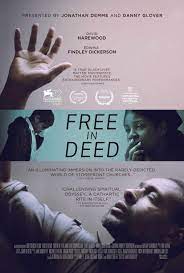
FREE IN DEED
New Zealand, 2015, 100 minutes, Colour.
David Harewood, Edwina Findlay, Preston Booth.
Directed by Jake Mahaffey.
It is surprising to find that this film is a New Zealand production. However, it was filmed in Memphis, Tennessee, in actual shopfront church is with actual members of the congregation, nonprofessionals.
The film presupposes the world of Pentecostals, the gatherings, the press styles, singing of hymns, the leadership and the intense preaching and rousing the congregation, slaying in the spirit, cure is, religious enthusiasm.
The narrative focuses on an African-American middle-aged man, A (British actor David Harewood), something of a derelict experience, going to the church, a conversion experience, his discovery that he had an ability in leadership, hands-on ministry, slaying in the spirit, then a desire to heal. He comes across a single mother with two children, the boy hyper Connecticut, uncontrollable, getting medical help and still breaking out. An elderly lady from the church introduces the mother to the church and to A.
At the core of the film is the sometimes offhand medical care for the boy and the intense attention given by a, many ceremonies in the church, attempts at healing – until a final attempt which is, literally, fatal, leading to AIDS arrest and arraignment. And a very striking final sequence where he returns to the church, calling on his hands and knees, groaning – leading to the audience to reflect on what has happened to him and what his future might be.
At the same time a portrait of Pentecostal prayer and activity as well is some critique.
- The world of Pentecostal churches? Prayer, experiences of the spirit, leaders in their preaching, hymns, emotions and gesticulating is, slaying in the spirit, healings? The film’s portrayal? Critique?
- Filmed in Memphis, in actual churches, with participants, nonprofessionals as well as professional cast?
- The focus on Abe, African-American, age, experience, accommodation at the motel, janitor in the schools, his religious experience, his conversion, faith in Jesus as his personal saviour? The consequences for his life, helping with the soup kitchen but being moved on? Attendance at the prayer meetings? The encounter with Melva and her son, his compassion, his hopes for healing? His own experiences of being able to slay in the spirit? The continued press services, in the church, his visit at home, support of Melva, the effect on the son, no effect? Melva and her dependence on A, the kiss? The repercussions for A? The final ceremony, two hours on the boy, his death? The police, the investigation, the charges, his explanations, the arraignment, his plea? On his own, returning to the church, crawling on his hands and knees groaning? His future?
- Melva, single mother, her children, devotion, looking after the boy, hyper Connecticut, unable to control him, the visits to the doctor, medication, school and his not being able to attend, the disturbances? Melva and the old lady, the discussion about prayer, going to the church, her religious experience, relying on A, the dependence, the attempts to heal the boy, the emotional and physical attraction? Her son’s death?
- The old lady, her support of Melva, prayer, a church? The other members of the congregation, the Bishop and his leadership, enthusiasm, preaching? The leader with the elaborate hat, slaying in the spirit? The atmosphere of these churches – small, shopfront?
- The portrait of doctors, medical consulting, their help, their detachment?
- Audiences immersed in this Pentecostal world, the hopes for healing, the faith in Jesus, spiritual communication? Get the failure to heal the boy? His death?
Cave, The/ 2019
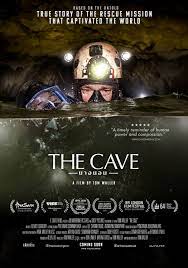
THE CAVE
Thailand/Ireland, 2019, 104 minutes, Colour.
Jim Warny.
Directed by Tom Waller.
The trouble with time for so many of us is that it passes so quickly. It is over three years since the world watched on, anxious, eager, ultimately rejoicing, when the young Thai football team and its coach were rescued after being trapped in a cave for almost 2 weeks.
Here is a dramatisation of those events, an opportunity for us to remember, to admire.
This is a fairly straightforward film as might be expected. We are introduced to the boys, playing football, the coach, the eagerness of riding their bikes, leaving them at the entry of the cave, going in to explore. In fact, while the screenplay goes back to the boys and the coach trapped in the cave, in the darkness, it does not spend a lot of time with them nor identify them strongly for the audience sympathy and understanding. They are the group. They have been trapped. They need to be rescued.
Most of the film concerns the rescue effort. All around the world there was constant reporting in that June-July of 2018 (and this is illustrated by several journalists reporting here). And, of course, constant news, constant images, constant speculation on social media.
However, it is helpful to remember that this was an extraordinary task, extraordinary logistics, extraordinary effort required from so many people. While there is an emphasis on the Thai authorities, there is also quite some implied criticism of the fussy bureaucracy that some of the officials demanded, holding up those who had volunteered to come and help, even those with drainage equipment, not letting them in until they had government authorisation. A reminder that there is always the danger of petty bureaucracy and hold up.
However, there is also great emphasis on the international collaboration, from the Americans with their organisational skills. But, also a significant emphasis on the cave divers who came in from around the world. This is dramatised especially in the figure of Jim Warny, cave expert, living in Ireland, urged to go to Thailand. Which means then that this often documentary-like narrative has the human element, the human story, Jim leaving his fiancee, keeping in touch with her, her encouragement. It means also that we identify with him as he worries about the situation, does various dives and tests, becomes heavily involved in the transporting the children from the deep cave, their being medicated and unconscious, carried through the waters, saved.
For those who remember the events and felt concerned at the time, this film is a solid reminder of the crisis, the boys and their coach, the need for rescue, the wonder of world collaboration for the rescue.
- The events of June-July 2018? The boys and their coach? Trapped in the cave? The rescue over two weeks? World attention and collaboration?
- Setting the scene, the boys playing football, coach, bike rides, going to the cave, exuberance, their being trapped by the rising waters?
- The documentary tone of the film, the facts of the entrapment, the response of the Thai authorities, efforts, bureaucratic tangles and insensitivities, the appeal for international help, to Hawaii, the Americans, to the cave divers from all over the world? The need for pumps to remove the water, the efforts to bring the pumps from all over Thailand? The logistics for the rescue, possibilities, difficulties, the rains, the rising water, the different chambers, ropes along the walls, the deposits of oxygen? The details of the final rescue?
- The brief focus on the boys, glimpses of them in the cave, conversations, surviving, but not giving a great deal of detail concerning food, air, water (drips from the iced ceiling), practical difficulties?
- World concern, news reporters and their reports, social media?
- The days passing, two weeks, indications of the boys and how long they were in the cave?
- The authorities, the logistics, the command? The locals, those bringing the pumps and their being rejected by the bureaucrats, the professor, the eventual working of the bigger pumps?
- The appeal to the cave divers? The personalising of the narrative by the portrait of Jim Warny? Warny re-enacting what he did at the time? Seeing him in Ireland, his talent, his fiancee, the news, the invitation to go to Thailand, packing, arrival, explanations? His contribution? Interaction with the other divers?
- The rescue of the boys, the range of divers, the techniques, injections and the boys unconscious, wrapped, being taken through the water, to the different chambers? The building up of the tension, the gradual bringing out of the boys and the coach?
- The local a claim, world acclaim?
- The boys, seeing them hospitalised, the helicopters? The focus on the coach, his coming to consciousness, anxieties?
- The heroism of the episode, the extraordinary interest worldwide, and the extraordinary collaboration for successful outcome?
Julia/ documentary

JULIA
US, 2021, 95 minutes, Colour, black and white.
Directed by Julie Cohen, Betsy West.
There have been quite a number of famous people in recent history called Julia. However, the contention of this documentary is that for many Americans, as well as for cooking fans throughout the world, simply naming Julia meant that the reference was to Julia Child. For those who have no idea who Julia Child is, whose realm is not that of the kitchen and cooking, here is an opportunity to get to know her and why she became so famous.
For filmgoers, especially those not adept at cooking, there was the opportunity in 2009 for a cinema introduction to Julia Child where she was played, so strikingly of course, by Meryl Streep in Julie and Julia (even to the impersonation of Julia Child’s idiosyncratic voice).
While there is some background about Julia Child’s earlier life, her presence in France and love for France, her marriage to Paul Child, a very long and devoted marriage, this film takes as its starting point Julia’s love for French cooking, enraptured by it, writing about it, working with a range of French cooks and experts (many of them here being interviewed).
Julia Child was a television personality, one of the original, perhaps the original, chef on television. She did not look like an immediate candidate – she was in her 50s, she was a tall, biggish woman, she had a strangely high-pitched voice and accompanying delivery, she had no previous experience. However, in the 1960s, with the emerging of public television, she was offered a place, found a niche, consolidated that niche with her screen presence, her direct addressing of her public, confiding in them as if we were standing on the other side of the table in the kitchen listening to her, watching her. No re-takes so, if something did not turn out too well, something spilt, it was simply a whoops situation, pick up the mess, carry on.
For those who enjoyed seen Julia Child on television, seeing her at work, admiring her, learning from her, being inspired by her, there is an abundance of clips throughout the film.
But, as with all television personalities (and here she is seen being interviewed by the hosts of the TV night shows, Johnny Carson, David Letterman, Dick Cavitt, Jay Leno…), There comes a time. But, in her 70s, on she went, appearing on Good Morning, America, continuing in the same vein, into the 80s, into the 90s. In fact, she died in 2004 (born in 1912).
Two other aspects emerge from this documentary, her relationship with her husband. A number of those interviewed found Paul Child too enigmatic for their taste and friendship. However, with footage from the past, with many photos, we realise that Paul Child was devoted to Julia, helping her in practical ways, management, encouragement, and stepping back from the limelight. There are some sad moments towards the end with his stroke, debilitated health, dementia.
The other aspect is the role of Julia Child played in the feminism awareness of the second half of the 20th century. She did become involved in some social issues, especially Planned Parenthood (she and Paul were unable to have children themselves), and became targeted at times by Pro-Life campaigners. The other area that the film highlights is that of sexual orientation, Julia being a person of her times and discovering so many gay men in the cooking world, perhaps a bit flippant at first, but with the emergence of AIDS, discovering more compassion, campaigning, cooking festivals in support, stating that preparing food is a wonderful expression of love.
For audiences who, perhaps, prefer to shun the kitchen and cooking, the film is an introduction to quite a character. For those who love cooking programs and chefs, of course…
Many Saints of Newark, The
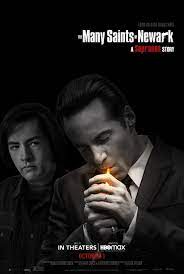
THE MANY SAINTS OF NEWARK
US, 2021, 120 minutes, Colour.
Alessandro Nivola, Leslie Odom Jr, Vera Farmiga, Jon Bernthall, Corey Stoll, Ray Liotta, Michaela De Rossi, Michael Gandolfini, Billy Magnusson, John Magaro, Michael Imperioli, Talia Balsam, Ed Marinaro.
Directed by Alan Taylor.
Here is a review without the benefit of the reviewer having seen The Sopranos. It is a look at this prequel on its own merits without the possibilities of making connections. And, in times to come, this is how the film will be seen, in its own right, perhaps encouraging audiences to venture into the television series.
The film was written and produced by the creator of The Sopranos, David Chase. An initial guarantee of authenticity. Promotion of the film has highlighted the fact that Michael Gandolfini plays the young Anthony, who will grow into the main protagonist of The Sopranos, Tony Soprano, played by his father, James Gandolfini. Very interesting casting, the audience looking at the young man, possibly trying to see the grown man in him (although, his facial expressions and look are more reminiscent of John Cusack).
So, a prequel in Newark, New Jersey. This is the context for young Anthony growing up, the family and connections, the Mafia background. The principal focus here is on a Mafia boss (with a profitable numbers set-up but very local rather than national), Dick Moltisanti (which translates from the pious Italian as Many Saints), a central character role for Alessandro Nivola who normally does not get such strong principal parts. He has a charming look, even a charming manner, moments of sympathy for many of his associates, and encouraging of the young Anthony. But, as we know from many Mafia films, especially thinking back to the early years of Michael Corleone, Dick can have vicious and violent moments that shock us.
And it is 1967. And there is a reference to the summer of love. Not so much of that in Newark. But the times were-changing, the old Corleone a Mafia style, even the Vito Genovese style was passing. The old rackets were still there, but drugs were coming in, there was a certain petty limitedness in these Mafia families and their activities.
And, the race issues. There had been violent riots in Watts, Los Angeles the year before. Now they are in Newark, some of the African-Americans working as collectors, even hitmen, for the Mafia, but wanting to set themselves up, rivals to the Mafia, prepared to risk violent confrontations. (And, the screenplay highlights the automatic racism and bigotry of the Mafia Italian background, presumptions of supremacy, towards the black population.)
As with many Mafia stories, there are lots of sequences of family, parties (with the parish priest there), a number of funerals, stories of Confirmation ceremonies, the men and their playing cards, the stories of migrant women coming to the US, their hopes, breaking from the restrictive rules of women in Italy, parish school problems…
So, there is quite a lot going on in this film, creating, as has been said, the family context, the social context from which Tony soprano will emerge (and a continued voice-over of someone who explains that he has been killed by Tony Soprano).
Quite a strong cast as well, Leslie Odom Jr representing the emerging African Americans, Vera fun eager as Tony Sopranos neurotic mother, John Byrne file as his father, Corey Stoll as his uncle. Ray Liotta, 30 years after Goodfellas, plays Dick’s father, a brutal man, but has a second role as Dick’s uncle, serving a life sentence in prison, seen only sitting on the visiting room, but presenting a more objective, even more moral perspective on Mafia life.
And, a sinister ending, assassination, audience assumptions as to who ordered it, but the realities…
- The title? The family, Moltisanti? The focus on Richard Moltisanti, Dick?
- The title, the focus on Newark, the Mafia in Newark, their operations, the numbers, extortion, furniture deals…? Big in New Jersey, small in the US?
- The Newark locations, homes, celebrations, business offices, church, schools, funerals? The Jersey coast and the beaches? The streets of the city? The black neighbourhoods, the transitions in the Italian neighbourhoods?
- The musical score, echoes of Italy? Songs of the period, 1967, the 1970s?
- The introduction to the family, the gathering, the conversations, the Catholic background, the priest and the discussions, the father, local patriarch, big fish, small pond? Domination, angers, beating the boat, his wife, second marriage, hopes? His eventual anger, attacking his wife, pushing her down the stairs? His relationship with his son, as successor? Dick and his anger, killing his father, transferring the body, setting the diner alight, the claim that the father was putting up the shutters because of the riot? Burning the body?
- Dick, his age, marriage, wife unable to bear children, his role as the boss, charm, the attraction to his father’s wife, at work, the numbers, the range of henchmen, their meetings, playing cards, using black extortionists and hitmen? His patronage of Anthony, his hopes to him, surrogate son? His visits to his uncle, bringing him the Miles Davis records, discussions with him, his uncle admitting his guilt, serving his sentence, as a kind of moral sounding board for Dick? His shrewd understanding of the death of his brother?
- 1967, the traditions of the mafia in the US, from the Corleone the days, to mob leaders like Vito Genovese the, the transitions of the 60s and 70s, taking on drug dealing? The Summer of Love, yet the summer of riots and burnings? As seen in Newark?
- Harry, his work for Dick, hitman, yet his ambitions, to be independent, his friends, contacts, moving to Independence, setting up his own system, and the conflict with the traditional Italians? And the symbol of the bigotry of the Italians, racist superiority, the doctor moving in on the street and the Soprano reaction?
- The voice-over, the opening cemetery sequence and those who were killed, the young man explaining that he was to be killed by Tony Soprano? The introduction of Anthony, his emotional mother and her reactions, his father as a boss, going to prison? Dick and his patronage? Anthony, intelligent, shrewd, his friends, deals, at school, expelled because of the numbers? His parents and his response to them? His response to Dick? Ambitions, the discussion with the school principal? Gift from Dick, the speakers? Dependence on Dick, Dick and his seeming neglect, Anthony spying on him, knocking on the door, anger at Dick?
- The father, deals, with the crowd, the henchmen, jail, getting out, a different world, clashes with his wife? Racism?
- Junior Soprano, his look, glasses, bald, academic, at the meetings, his advice? The various interventions? His slipping, hurting his back? Resentments? People laughing at him? The irony of his ordering the hit on Dick?
- Dick, the romance, Giuseppina, brought to America, trying to learn English, her husband’s offhand reactions, her attraction to Dick, the issue of the beauty salon, independence, his helping her, the setup? The dramatic sequences, at the sea? Pregnant? Her relationship with the black hitman? Her telling Dick, his anger, the angry impulse and his drowning her?
- The years passing, times changing, the rivalries between Italians and Blacks, riots, violence, shootouts?
- This film as a prequel to the television series, the early life of Tony Soprano, and the film giving a context for his growing up, the influence of his family, violence and crime, his subsequent career?
We support the aims of COP 26, Glasgow, especially the climate concerns and goals of our Pacific neighbours
We support the aims of COP 26, Glasgow, especially the climate concerns and goals of our Pacific neighbours
Images of Tuvalu minister giving COP26 statement in the ocean go viral on social media
Foreign Minister Simon Kofe addressed cameras while knee-deep in the ocean to highlight the sea level rises affecting his nation, drawing plenty of attention and admiration on social media.
Simon Kofe during the film shoot for his COP26 statement. Source: Facebook/Ministry of Justice, Communication and Foreign Affairs, Tuvalu Government
With hundreds of speakers on the running order, it's going to take a lot to make your message stand out at the United Nations' COP26 climate summit.
So the Pacific nation of Tuvalu took an innovative approach this week to express the dangers it faces due to the effects of the climate crisis - and it's gone viral on social media.
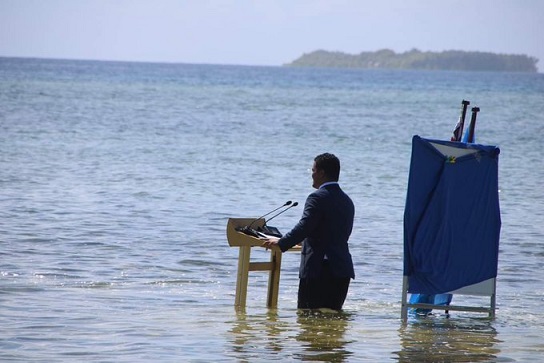
In a pre-recorded statement shot by public broadcaster TVBC, Foreign Minister Simon Kofe addressed cameras while knee-deep in the ocean to highlight the sea level rises affecting Pacific nations such as his.
The video will be played on Tuesday in Glasgow as part of the Pacific Climate Change Mobility and Human Security side event at COP26.
“The statement juxtaposes the COP26 setting with the real-life situations faced in Tuvalu due to the impacts of climate change and sea level rise and highlights the bold action Tuvalu is taking to address the very pressing issues of human mobility under climate change,” Tuvalu’s Ministry of Justice said in a statement.
Some ex-student stories: Downlands, celebrating 90 years
Some ex-student stories: Downlands, celebrating 90 years

PRESTON WILLIAMS

Class of 2020 Preston is already making an impact to those around him.
An interview with the Herald Sun, showcased Preston and his identity.
Preston joined the Wanderers Rugby Union Club in Cairns and this week take on the Bulls in the inaugural cultural round.
“We have a lot of different cultures in our team,” he said.
“Being NAIDOC Week, we wanted the Aboriginal and Torres Strait on our jersey. But because we have such a mix of cultures – Tongans, Samoans, Fijians and Cook Islands – we got their artwork to represent all of them.”
“Representing your identity – for me, it’s the strongest thing you can possibly do,” Williams said. “It’s telling people who you are and where you’re really from.”
FIONA McILWAIN (O’SHEA)

Did you get the courier mail this weekend?
Fiona McIlwain (nee O'Shea) Class of 1986 featured on the cover.
Fiona is currently working with Bestlife to build/buy a house in her daughter Helena's Legacy.
Helena dedicated her short life to looking after a children with a disability, working with students at Conductive Education Queensland (CEQ). Helena began working with Lara Coory whose mother Kathy Coory is the CEO of BestLife. BestLife is an organisation which provides high quality fun, interesting and supported short stays for small groups of children and young adults living with a disability.
The problem was that BestLife does not have a house to run such program in, hence the drive for the families to create Helena's House, in her legacy.
ANNA BATTLE
Congratulations to past student, Anna Battle, who currently has her work on display at the RME Downlands Art Exhibition. Anna is launching her range of vibrant wallpaper, produced by Milton and King, which is certainly one of the highlights of the exhibition. Toowoomba artist’s work will be in homes around the world
GERWYN DAVIES
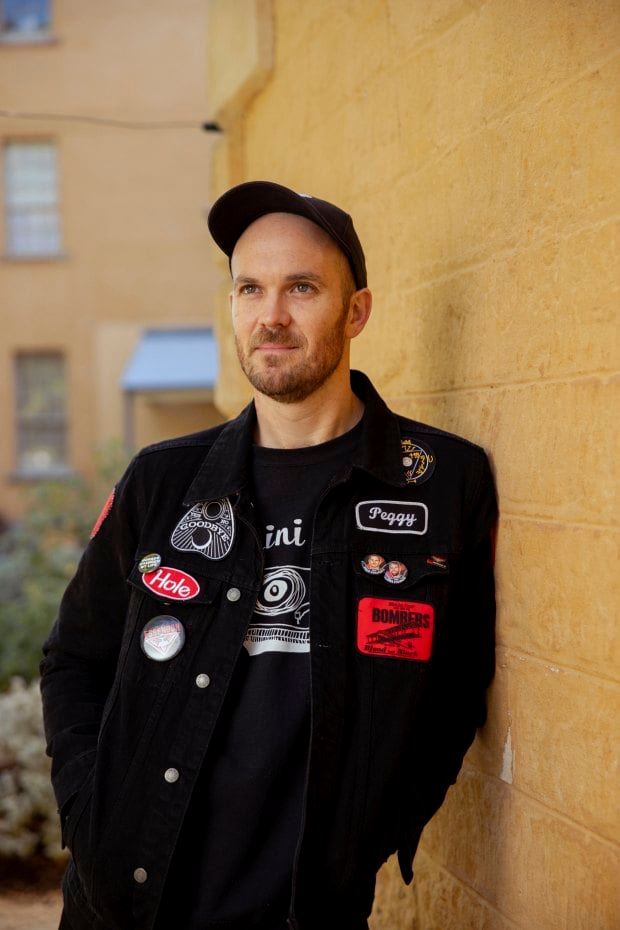
Past Downlands student Gerwyn Davies, class of 2001, spoke with the Sydney Morning Herald about his rise to success as an artist who brings quirky and colourful characters to life through performative photography.
Davies’s work is building momentum, with his pieces soon to be featured in the store windows of French luxury house Hermes and exhibited at boutique Brisbane hotel, The Calile.
During his interview Davies spoke about his youth, including his time at Downlands, reflecting on how this time shaped him into the artist he has become.
Remembering the MSC Martyrs of Canet del Mar. Feast Day 6th November.
Remembering the MSC Martyrs of Canet del Mar. Feast Day 6th November.

And a reminder of their story;
Today is the feast day of the seven MSC martyrs. Blessed Fathers Antonio Arribas, Abundio Martín, José Vergara, Josep-Oriol Issern and Brothers Gumersindo Gómez, Jésus Moreno and José del Almo were beatified in May 2017 and are the first members of our Congregation to be declared blessed.
These seven Missionaries of the Sacred Heart lived and worked in the Pequeña Obra (minor seminary) of Canet de Mar, Barcelona, preparing some 65 young people for religious life and priesthood. By their lives and by their deaths as martyrs, they give the fullest meaning to the motto of our Congregations: May the Sacred Heart of Jesus be loved everywhere!
July 18, 1936 marked the beginning of the Spanish Civil War. The days that followed were ones of anguish and desolation and saw the beginning of a religious persecution. On July 21, the parish church of Canet de Mar was burned down. On that same day, at about 4:00 pm, a group of armed people knocked on the door of the house and demanded that the entire community of the seminary abandon the premises by order of the People’s Committee. They were led to a nearby park beside the Shrine of Mercy, where they were kept under surveillance for two weeks.
On August 3, a member of the Committee warned the director: “You people are in imminent danger. The Committee has decided to shoot you this very night. Leave and do not get me involved. Don’t worry about the children; nothing will happen to them. And we consider the elderly priests to be like the children.” Much to their regret, the religious had to leave the seminarians. They formed two groups for their escape: one group of four and another of seven.
Fleeing those who wanted to kill them that night, Fr. Antonio Hortigüela and his six companions began a difficult journey towards the French border. They passed through places they did not know, hiding all the time, barely able to sleep or eat, in adverse weather conditions. They did, however, receive help in several farms. What is truly remarkable is that they were able to stay together as a group all this time.
On September 28, they arrived at a farmhouse called Mont-Ros as night began to fall. One of the religious went to the house to ask for directions. They did not want to stay to eat; they only wanted information about the road to the border. They followed the instructions they had been given and after traveling a little more than a kilometer, a group of Committee members was waiting for them. They had been betrayed, and they were immediately apprehended and taken to Committee headquarters.
This is how, exhausted by the fatigue and the sufferings of almost two months of flight over mountains and down ravines, innocent and without guile, they came to follow in the footsteps of the Master. At about 10:00 pm, they were handed over to the Committee of Sant Joan les Fonts, Girona. They were taken to the schoolhouse where the Committee had its seat. A neighbor woman, from the terrace of her house, saw them pacing in the hall praying the rosary.
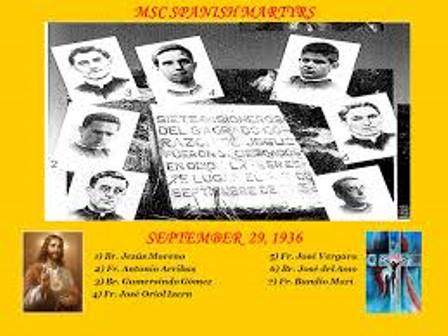
The next day, September 29, between 3:00 and 4:00 in the afternoon, a crowd assembled in the door of the schoolhouse. The religious were bound two by two. The one who walked alone had his hands tied behind his back. They were silent; almost all of them were peaceful. One of the youngest was crying. The crowd was impressed and kept silent. One of the Committee members attacked the Pope, the church and the clergy saying: “Not one of your race will remain!”
The prisoners were put on a bus. The bus came to a stop before crossing the bridge on the River Ter. Some witnesses who were working in a field nearby saw the bus stop and how four people, bound two by two, were out and pushed towards a slope. The witnesses heard arguing and then shots, and they saw how the four bodies leaned forward at the same time. The other three religious were then brought out of the bus and suffered the same death.
That same afternoon the Committee members forced some men from the town of Serinyà, known as good Christians, to carry the bodies to the town cemetery. The martyrs were buried in tombs dug in the ground, four bodies in one and three in the other. This was their resting place until March 30, 1940, when their bodies were exhumed and transferred to the cemetery of Canet de Mar, near the MSC community. Following the solemn celebration of beatification, their remains were placed in one of the chapels of the Shrine of Our Lady of the Sacred Heart, calle Rosellón 175, Barcelona.
